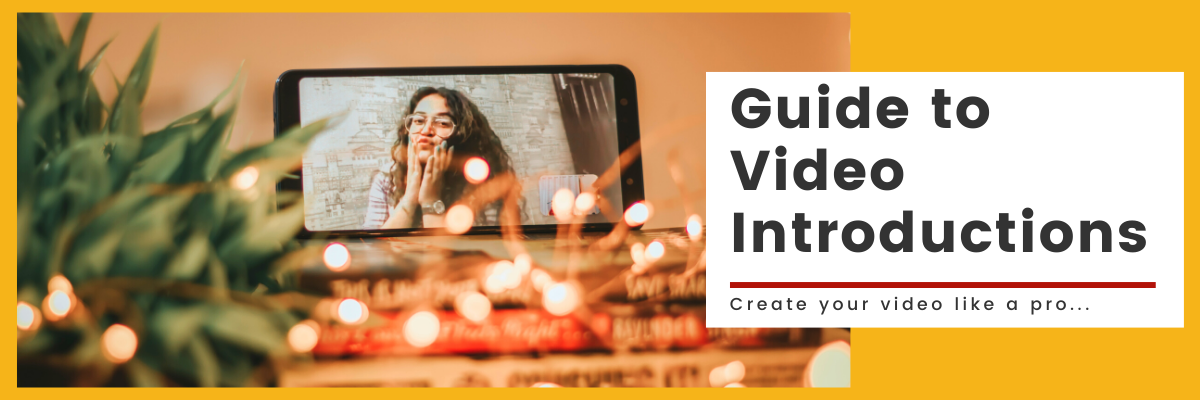
Technology is playing a more significant role in the job-seeking process, right from the initial application, which may require a video introduction, through to the interview, which might be a video call. While most of us have had experience with filming ourselves to record daily life, using video in a professional context can take some additional thought and preparation.
Your video should be personal, engaging, and authentic to you. What's the best way to be authentic? Put yourself on camera! Use this as an opportunity to showcase your personality, experience, achievements, and future ambitions. Schools and centres want to get to know you and why you would be an asset to their school environment. Education is a competitive sector, so it's important to stand out from the crowd. From our experience, senior school leaders and centre managers prefer to see someone physically or on film rather than being presented with hundreds of CV applications.
The following steps will guide you through creating a professional video introduction.
Getting Set Up
Setting
Your ideal space will:
- Be quiet - minimise background noise, including sounds from air conditioning or heating fans
- Be appropriate - whether you're using a dynamic background (bookshelf, etc.) or a neutral one (plain or coloured wall), avoid clutter and things that might distract the viewer
- Be still - set up in a space where you can stand or sit in a stationary chair to avoid swivelling or fidgeting
- Be echo-free - as much as possible
Lighting
Your ideal lighting setup will:
- Be directly lit - the main source of light should be facing you; avoid light sources coming from above or behind you; avoid dark shadows on your face
- Be naturally well-lit - shoot in daylight, if possible; try not to record in direct sunlight as this can cause you to look overexposed and squinty
- Note: If you cannot use natural light, use a ring light or position two lamps at 45-degree angles from you and have the camera between them
Video Camera
Your ideal camera setup will:
- Be steady - use a tripod or set up your phone/camera on a stable surface
- Be horizontal - set it up to film you in landscape mode (not portrait!)
- Be at eye level - that will be the most flattering angle
- Be framed well - don't lose the top of your head or be too close; placing yourself to one side of the shot (following the rule of thirds) will be more interesting to the eye
- Be framed well - don't lose the top of your head or be too close
Camera Presence
- Maintain 'eye contact' with the camera
- Limit your hand movements, try to keep your hands by your side or gently folded in your lap
- Keep your shoulders relaxed
- Smile, particularly at the start and end of your responses/statements
While Speaking
- We know you're used to getting engagement in an interview, so it can feel a little unusual to not receive immediate feedback. You might find it helpful to have someone behind the camera; talking to them will help you to feel more natural.
- Take a few slow, deep breaths before you record yourself to settle any nerves
- It's great to prepare, but try not to read off a screen or notes as this can appear stilted and look unnatural
- Commence and conclude each statement with a small pause, looking directly at the camera
- Begin well, avoid, 'so' and 'um' at the start of your sentences and avoid ending them with an upwards inflection
- Clearly summarise what you are responding to or introducing at the start of each statement
- If there are any interruptions or disruptions to your flow redo that section
What to Avoid Wearing
- Heavily patterned clothing
- Clothing that blends into your background
- Shiny fabric or accessories
- Noisy accessories like bangles
- All black or all white clothing
- Logos or obvious branding that might be a distraction
Do a quick check for any sneaky stains, wrinkles, or broccoli between your teeth!
Getting Practical
- If possible, have a friend or family member assist you with filming
- Do a test recording first to check the quality of the sound, picture, and lighting
- Have some water on hand
- If you have a dry mouth, try water with lemon, or taking a bite from an apple
Getting Technial
- Your standard camera setting should be fine, but if unsure, check that you are filming at 1080p at 30fps or 60fps (or otherwise, 4k)
- For clear sound, modern smartphone microphones should be adequate, you can source cost-effective options if it's difficult to hear you
- Before sending it to our team, you might like to edit your footage, trimming unnecessary footage from the start or end of the videos
Now you know how to set up, select a suitable outfit, and engage your viewer. You are ready to create your most professional and authentic video introduction. Trust that you can talk about yourself and your teaching practice - you're the best expert on yourself. Happy filming!